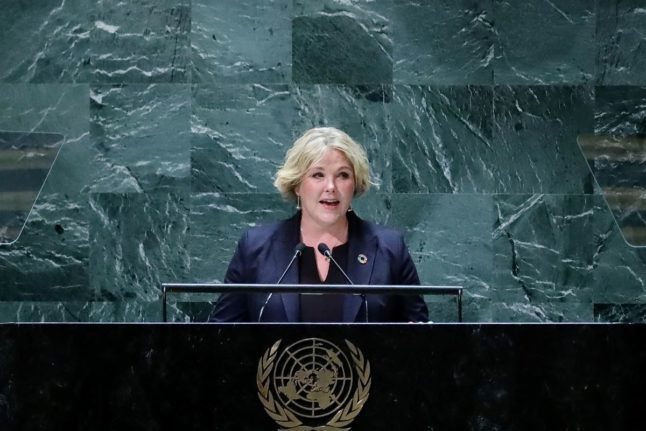Norway’s minority government, consisting of the Labour Party and the Centre Party, agreed on a state budget for 2023 with its preferred negotiation partner, the Socialist Left Party, on Tuesday evening.
Among the proposals from the original budget were plans to introduce tuition fees for students from outside of the European Economic Area (EEA) from next year.
The original proposal was met with backlash from students and the Socialist Left Party (SV). However, despite the opposition from SV, the government will press on with its plans.
Mina Haugli, the communications adviser for the Labour Party’s parliamentary group, told The Local that there had been no changes to the proposal following the announcement of a budget being agreed upon.
“There are no changes on that matter (tuition fees for foreign students) in today’s agreement,” she confirmed to The Local.
News that the government would get the green light for its plans has been expected since last week after the Socialist Left Party confirmed to The Local that even though it was opposed to the plans, it would not bring them up in talks.
What happens next?
In agreeing on a budget with the Socialist Left Party, the government has secured a parliamentary majority for its fiscal plan for 2023.
Essentially, this means that barring any late U-turns from the government, the policy will be officially adopted later this week following the budget debate in parliament.
While the government and opposition will debate policies from the budget, it has the majority it needs to vote through the proposals.
Once the budget has passed through parliament, the government will begin implementing the policy.
Then, more solid details, such as how much it will cost non-EEA students to study in Norway, will begin to emerge.
Currently, there are only estimates floating about on how much students will have to pay to study at Norwegian universities.
Previously, State Secretary for Education Oddmund Løkensgard Hoel told public broadcaster NRK that a study place in Norway could cost students around 130,000 kroner a year.
However, fees will be at the university’s discretion, meaning that foreign students could end up paying more or less than the estimated figure.



 Please whitelist us to continue reading.
Please whitelist us to continue reading.
Member comments